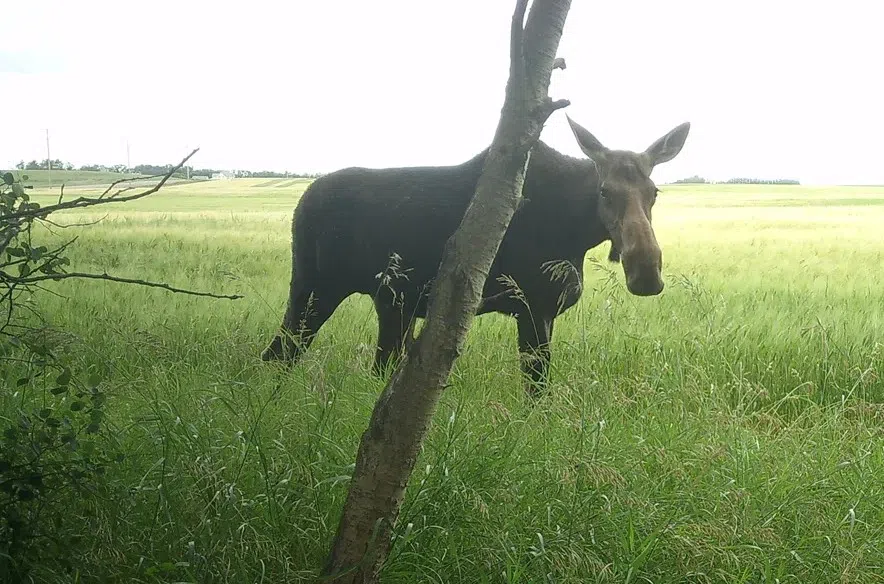Wildfire evacuees may have temporarily moved into cities, but the same can’t be said for wildlife.
“We see no evidence of that,” Wildlife Rescue Society of Saskatchewan (WRSOS) Executive Director Bonnie Dell said. “There’s no reason for them to be drawn to an urban area because of a fire.”
Instead, Dell said these animals prefer to stay in the wilderness, avoiding noisy cities –although that’s only in relation to larger mammals.
Read more:
- Moose are moving in: Saskatoon wildlife cameras show growing urban population
- Wildlife experts believe bear wandering into Regina a rare situation
- VIDEO: Moose was on the loose in Saskatoon’s Stonebridge neighbourhood
Those animals would be more likely to escape fire paths, moving in the direction the smoke pushes them according to Saskatchewan Wildlife Federation Executive Director Darrell Crabbe.
In contrast, smaller mammals, insects and amphibians likely didn’t escape and, “probably would have perished in the fire,” Crabbe said, along with birds whose nesting season coincided with the wildfires.
Wildlife in cities “nothing unusual”
With many animals killed by the fires, or choosing to stay hidden, the wildlife seen on highways or near cities aren’t the same as those escaping the blaze.
Those animals are instead walking along a wildlife corridor, according to Crabbe.
“Every year we hear about moose in Saskatoon and Regina, bears coming in. But that’s not because of a fire. It’s a natural migration route for them to follow the valley,” Crabbe said, adding that it has “nothing to do with the cause and effect of a fire.”
Dell echoed this thought saying wildlife, like moose seen in Saskatoon, are “coming through because the city has wisely left wildlife corridors that come right through the city and the river valley. So that’s nothing unusual.”
What is unusual about this year, though, is the sheer number of animals displaced because of wildfires, even if they aren’t making their way to urban areas.
“Just the volume of the size of the fires […], they were just so large, it would have displaced a lot of animals,” Crabbe said.
Out with the old forests
Even with the death and displacement of wildlife, “all is not lost,” according to Dell.
Certain creatures, like woodland caribou and owls, do well in old-growth forests, but Crabbe said there are many species, including elk, deer, moose and bears that thrive in new forests.
“Mother Nature has a terrific way of rebounding,” Crabbe said. “So, the general consensus would be within five to 10 years in those burnt-out areas, those areas will become havens for all kinds of species.”
Looking at shorter-term solutions, Dell said that people can help out wildlife on the move who are dealing with hotter temperatures.
“If you’re urban or rural, leave out some shallow dishes of water,” Dell said, adding that people should “put a rock in so that if something small gets in, they can get out again.”











